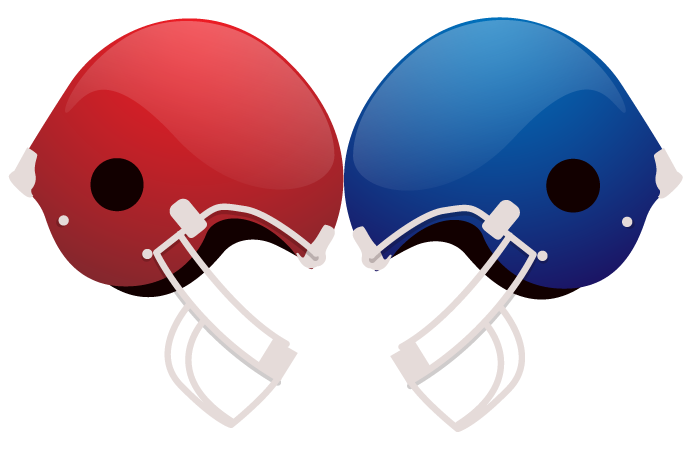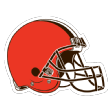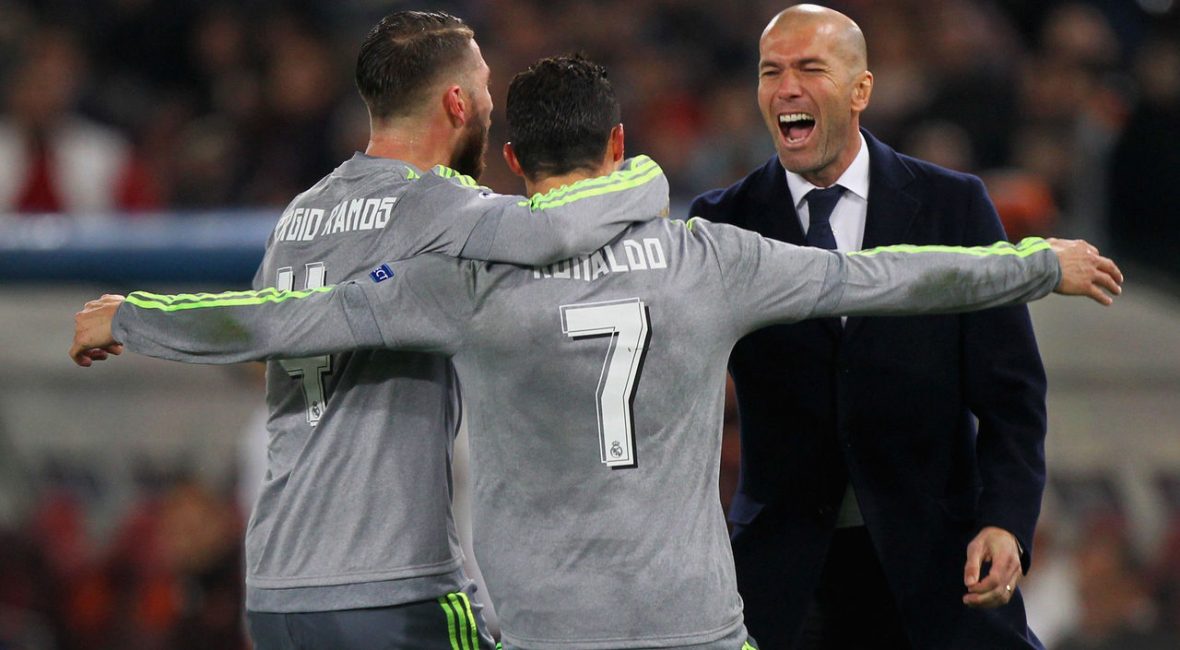Thirteen quarterbacks came off the board in the 2018 NFL draft, including five in the first round alone. How have they looked so far?
NFL Nation reporters offer early progress reports on their performances at rookie minicamps and organized team activities.

Round 1, No. 1 overall
The draft’s first overall pick is starting over. Mayfield spent a fair amount of time in rookie camp practicing taking the snap from center. In the first OTA practice open to the media, Mayfield threw three interceptions. In the second, his reps seemed to be reduced by a few. None of this means he can’t play; it shows that he’s learning the fundamentals and basics of playing in the NFL. — Pat McManamon

ESPN’s analytics team examined team data and ran 10,000 simulations. Here’s how the Football Power Index sees the 2018 season playing out.
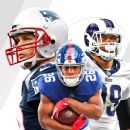
A wild offseason should lead to an eventful season. Here are the biggest names and storylines to watch as the number of days remaining until kickoff enters double digits.
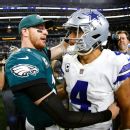
Can Carson Wentz regain his pre-injury MVP form? Can Dak Prescott prove he’s the Cowboys’ franchise quarterback? Here’s what will define the 2018 season for every team.
2 Related

Round 1, No. 3 overall
The key word: progress. After a rough start in OTAs, Darnold settled down in the second week, perhaps not coincidentally when he started getting reps with the first-team line. His arm talent is obvious. For Darnold, the biggest challenge is knowing where to throw the ball and getting it out on time. He’s getting more reps on a daily basis than vets Josh McCown and Teddy Bridgewater, and that should benefit him come training camp. He’ll get a shot to be the Week 1 starter, but it would take a spectacular preseason to nail down the job. — Rich Cimini

Round 1, No. 7 overall
Allen has practiced exclusively with the third team through the first two weeks of OTAs, behind AJ McCarron and Nathan Peterman on the depth chart. It has been a mixed bag so far for Allen, who was inaccurate on his first pass and later telegraphed an interception to cornerback Breon Borders during the two-minute drill in Thursday’s practice. Coaches gave Allen another shot at the drill, and he marched downfield and lofted an accurate fade pattern to wide receiver Cam Phillips for a touchdown. Allen’s off-the-charts arm strength has been evident in the velocity of the passes he has thrown; the accuracy seems to be a work in progress. — Mike Rodak

Round 1, No. 10 overall
So far, the scouting report on Rosen has been dead-on. He was hyped as the most NFL-ready quarterback in this year’s draft because of the combination of his intelligence and skill. From what he has shown during the limited practices open to the media, he’s both smart and talented. His arm has been live, especially on deep passes. It’s clear he can think through a play rather quickly and efficiently. From what his offensive linemen have said about him so far, he’s been displaying a maturity and confidence in the huddle that has been well received. — Josh Weinfuss

Round 1, No. 32 overall
Jackson remains a work in progress. He’s accurate in the middle of the field and shows good touch on deep passes. But he’s inconsistent when throwing outside the numbers. His passes tend to sail when targeting receivers along the sideline. What jumps out is Jackson’s speed. When he gets into the open field, he makes jaw-dropping cuts to elude defenders. The Ravens will get Jackson on the field immediately because of his explosiveness, but he isn’t close to competing with Joe Flacco for the starting quarterback job. — Jamison Hensley

Round 2, No. 76 overall
Rudolph has shown off his arm strength, has a good touch on the deep ball and seems to be adjusting well to the offensive scheme. In OTAs, Rudolph hasn’t made any major mistakes but has played it relatively safe and overthrew a few receivers. The under-center exchanges were a problem early in rookie camp. Overall, Rudolph is about what the Steelers expected: an intriguing, down-the-road option. — Jeremy Fowler

Round 4, No. 108 overall
Lauletta was up and down at rookie minicamp and served as the fourth-string quarterback at OTA No. 1 behind Eli Manning, Davis Webb and Alex Tanney. There’s going to be a steep learning curve for Lauletta making the jump from Richmond to the NFL. His arm isn’t spectacular (as advertised), so everything else has to be perfect for him to succeed. But you can tell from talking to him that this is a smart young man who understands the game of football. — Jordan Raanan

Round 5, No. 171 overall
White is currently No. 3 on the depth chart behind Dak Prescott and Cooper Rush, but he has shown a live arm and has made good decisions. What has impressed Jason Garrett the most is the early command of the offense and the huddle. White is playing mostly with other rookies or inexperienced players, but he has picked things up quickly to where he can get people in the right spots. How he plays in the preseason games will determine whether the Cowboys carry three quarterbacks on the 53-man roster, but so far, he has impressed coaches. — Todd Archer
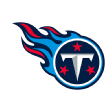
Round 6. No. 199 overall
Falk has blended in well behind Marcus Mariota and Blaine Gabbert during his early opportunities. He has showed off accurate ball placement, particularly in short-yardage situations. Some development is needed, particularly with getting him comfortable taking snaps under center and moving in more of a pro-style offense, but early reviews are that Falk is coming along as expected for a sixth-round pick. He’s expected to spend 2018 as a developmental QB3 before eventually becoming Mariota’s long-term backup. He’s hopeful to expedite that timeline. — Cameron Wolfe

Round 6, No. 203 overall
As expected, Lee has been up and down, which pretty much summed up his career at Nebraska. He has had some issues taking the snap under center and air-mailed several easy passes, including a swing pass to a running back that should be an easy completion for an NFL quarterback. He also has been picked off twice. He seems destined for the practice squad. — Mike DiRocco

Round 7, No. 219 overall
Wearing the unusual No. 58 — as Bill Belichick hasn’t given rookies permanent jersey numbers — Etling accounted well for himself in the first practice open to reporters and then in a post-practice interview. He showed solid arm strength, which is something offensive coordinator Josh McDaniels noted as a strong trait, and seemed to get the players in and out of the huddle without issue. There’s obviously a long way to go at this point, but Etling seemed to take advantage of the expanded repetitions he wouldn’t have received if Tom Brady were present, as he worked behind veteran Brian Hoyer. Said Hoyer: “I can speak from my own experience, this isn’t an easy system to come into as a rookie. You get a lot thrown at you, and I think Danny is doing a good job.” — Mike Reiss

Round 7, No. 220 overall
The seventh-round pick from Florida International was the standout of the team’s rookie minicamp. Pete Carroll remarked afterward how McGough showed nice arm strength and accuracy in addition to the mobility the Seahawks had already seen plenty of on his college tape. The usual qualifiers apply. It was only a three-day minicamp with no veterans and no shoulder pads (those have been the only practices open to the media so far). McGough still has a lot to prove to unseat Austin Davis as Russell Wilson’s backup, but he’s off to a nice start. — Brady Henderson
Round 7, No. 249 overall
Woodside is firmly entrenched as the No. 3 quarterback for the moment, and that was clear during the second week of OTAs. During the practice open to the media, Woodside did not throw a pass, as all the reps went to Andy Dalton and No. 2 quarterback Matt Barkley. Woodside did get a scout-team rep at safety. — Katherine Terrell

